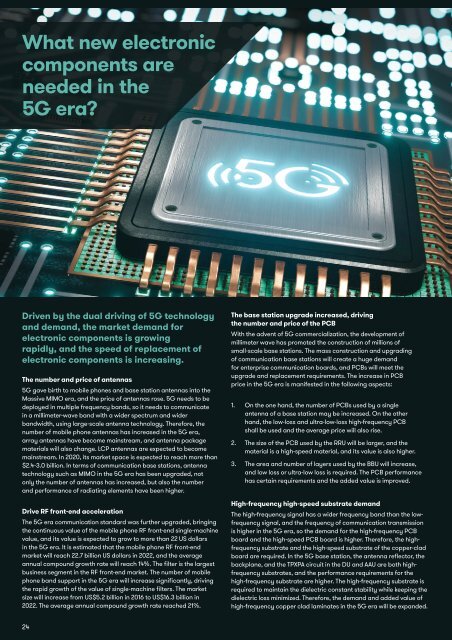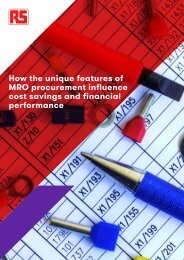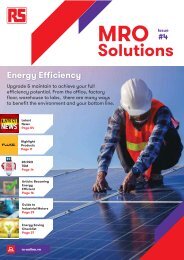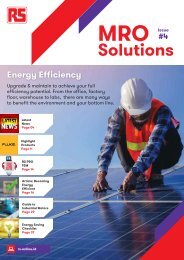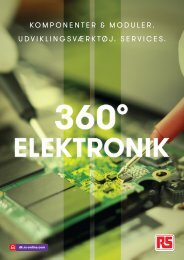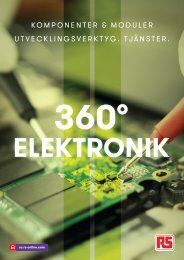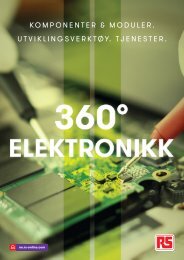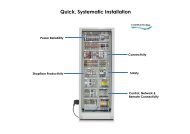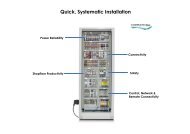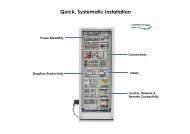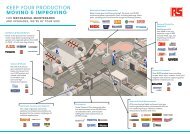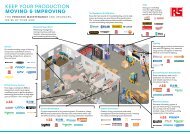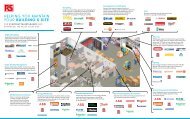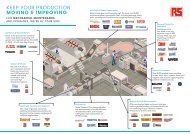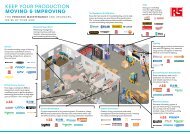Electronic Solutions SG
Create successful ePaper yourself
Turn your PDF publications into a flip-book with our unique Google optimized e-Paper software.
What new electronic<br />
components are<br />
needed in the<br />
5G era?<br />
Driven by the dual driving of 5G technology<br />
and demand, the market demand for<br />
electronic components is growing<br />
rapidly, and the speed of replacement of<br />
electronic components is increasing.<br />
The number and price of antennas<br />
5G gave birth to mobile phones and base station antennas into the<br />
Massive MIMO era, and the price of antennas rose. 5G needs to be<br />
deployed in multiple frequency bands, so it needs to communicate<br />
in a millimeter-wave band with a wider spectrum and wider<br />
bandwidth, using large-scale antenna technology. Therefore, the<br />
number of mobile phone antennas has increased in the 5G era,<br />
array antennas have become mainstream, and antenna package<br />
materials will also change. LCP antennas are expected to become<br />
mainstream. In 2020, its market space is expected to reach more than<br />
$2.4-3.0 billion. In terms of communication base stations, antenna<br />
technology such as MIMO in the 5G era has been upgraded, not<br />
only the number of antennas has increased, but also the number<br />
and performance of radiating elements have been higher.<br />
Drive RF front-end acceleration<br />
The 5G era communication standard was further upgraded, bringing<br />
the continuous value of the mobile phone RF front-end single-machine<br />
value, and its value is expected to grow to more than 22 US dollars<br />
in the 5G era. It is estimated that the mobile phone RF front-end<br />
market will reach 22.7 billion US dollars in 2022, and the average<br />
annual compound growth rate will reach 14%. The filter is the largest<br />
business segment in the RF front-end market. The number of mobile<br />
phone band support in the 5G era will increase significantly, driving<br />
the rapid growth of the value of single-machine filters. The market<br />
size will increase from US$5.2 billion in 2016 to US$16.3 billion in<br />
2022. The average annual compound growth rate reached 21%.<br />
The base station upgrade increased, driving<br />
the number and price of the PCB<br />
With the advent of 5G commercialization, the development of<br />
millimeter wave has promoted the construction of millions of<br />
small-scale base stations. The mass construction and upgrading<br />
of communication base stations will create a huge demand<br />
for enterprise communication boards, and PCBs will meet the<br />
upgrade and replacement requirements. The increase in PCB<br />
price in the 5G era is manifested in the following aspects:<br />
1. On the one hand, the number of PCBs used by a single<br />
antenna of a base station may be increased. On the other<br />
hand, the low-loss and ultra-low-loss high-frequency PCB<br />
shall be used and the average price will also rise.<br />
2. The size of the PCB used by the RRU will be larger, and the<br />
material is a high-speed material, and its value is also higher.<br />
3. The area and number of layers used by the BBU will increase,<br />
and low loss or ultra-low loss is required. The PCB performance<br />
has certain requirements and the added value is improved.<br />
High-frequency high-speed substrate demand<br />
The high-frequency signal has a wider frequency band than the lowfrequency<br />
signal, and the frequency of communication transmission<br />
is higher in the 5G era, so the demand for the high-frequency PCB<br />
board and the high-speed PCB board is higher. Therefore, the highfrequency<br />
substrate and the high-speed substrate of the copper-clad<br />
board are required. In the 5G base station, the antenna reflector, the<br />
backplane, and the TPXPA circuit in the DU and AAU are both highfrequency<br />
substrates, and the performance requirements for the<br />
high-frequency substrate are higher. The high-frequency substrate is<br />
required to maintain the dielectric constant stability while keeping the<br />
dielectric loss minimized. Therefore, the demand and added value of<br />
high-frequency copper clad laminates in the 5G era will be expanded.<br />
24


